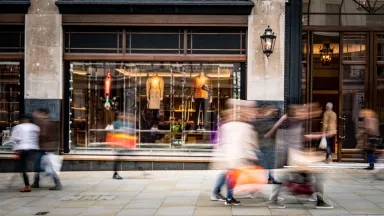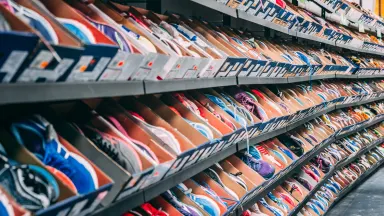Rethinking Retail Security: Beyond Tackling $100 Billion in Shoplifting Losses, Stores Must Prioritize Worker Safety
One hundred billion dollars. This is how much retailers report in total loss (shrink), according to the National Retail Federation. We explored the changing nature of theft — and what can be done about it — at SXSW with two leaders who have an inside view into what is happening at the store-level and more broadly in the retail industry: Christie Fleischer, CEO of Benefit Cosmetics, and David Johnston, Vice President of Asset Protection & Retail Operations at the National Retail Federation (NRF).
The bottom line: it’s more important than ever for retailers to take action – both to keep their employees safe and to bring shoppers back into their stores. Here are three key takeaways from our conversation:
1. Retail is about the people.
Retail workers have an outsized impact in the economy: in the United States, one in four workers is employed in a retail or retail-adjacent position. These millions of retail workers face a number of challenges: organized retail crime and shoplifting is contributing to more than a third of losses, the number of shopping malls shrunk 72% in 2023, and turnover rates are topping 60%. Adding to the growing list of concerns: our own research reveals that 66% of retail workers reported experiencing a security incident in the past year.
Retailers cannot afford to compromise the safety of their people. A number of potential solutions have been proposed to better protect frontline retail workers. Beyond deploying technology like panic buttons, security cameras, real-time person of interest alerts, talk-down speakers, or body cams, some states, such as California, are requiring retailers to train employees to deal with potentially violent issues in the workplace. David from NRF sees this as an acute need for similar requirements at the federal level, and in the meantime, called for retailers to consider adding self-defense classes, sessions on confrontation, or de-escalation training to their onboarding processes.
2. We can’t take the fun out of shopping in-store.
Retail crime also negatively impacts local economies: they scare shoppers away from in-person purchasing and, in drastic situations, can cause harm to staff or customers. We have to balance safety and security with the customer experience in-store. Shopping should be a fun experience! Christie stressed the importance of seeing, touching and even trying out a new product before making a purchase. This is especially important for cosmetics – if a product is behind lock and key, and requires an associate to access it, a customer may simply walk away, especially in busy stores that might be understaffed. We see this play out in the data: our research revealed that 71% of paying shoppers are put off by anti-theft deterrent measures.
Christie also noted how witnessing or seeing the impact of recurring theft can negatively impact both the customer and employee psyches. If retailers can understand what customer expectations are for their shopping experiences, they can better tailor anti-theft measures to align with those needs. Further methods to secure retail locations will need to find a balance between continuously improving security efforts while also prioritizing the shopper experience.
3. Retail theft has changed dramatically, and retailers’ response needs to shift with it.
While David’s career in loss prevention started with catching the one-off opportunist, today's retail theft landscape is much more organized. This new kind of shoplifter, called a “booster”, will steal merchandise in rapid succession from stores across multiple counties and states and share it with gray market resellers who turn a massive profit selling those stolen goods to unsuspecting consumers online.
Because boosters can be easily replaced, collaborative efforts across retailers, law enforcement, and prosecutors to break up these organized retail crime rings is focused on the gray market resellers. Legislation is in the works to directly combat resellers by requiring any seller to provide records to show their goods were legally obtained, as well as request large retailers to report “theft data” for investigators to keep an eye out for. Technology solutions can also help by increasing visibility and enhancing security measures to combat boosters; for example, retailers can utilize people analytics or facial recognition to set automatic alerts for repeat offenders or people of interest. As consumers, we can also do our part in verifying basic seller information if purchasing from a third-party vendor - especially from online marketplaces.
It’s clear the retail industry faces massive challenges; however, there are opportunities for retailers to explore, such as increased security technology and proper training, to prioritize employee safety and the customer experience.






